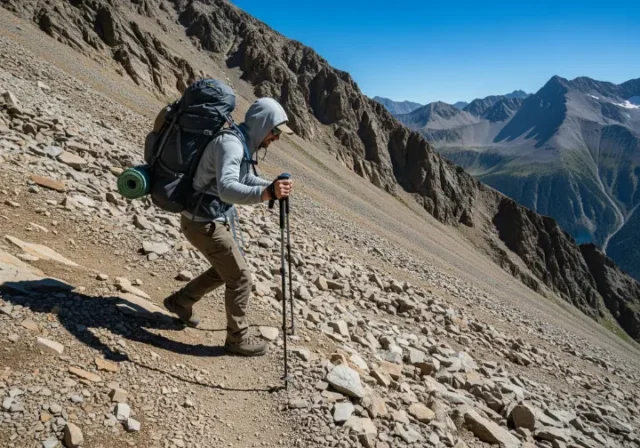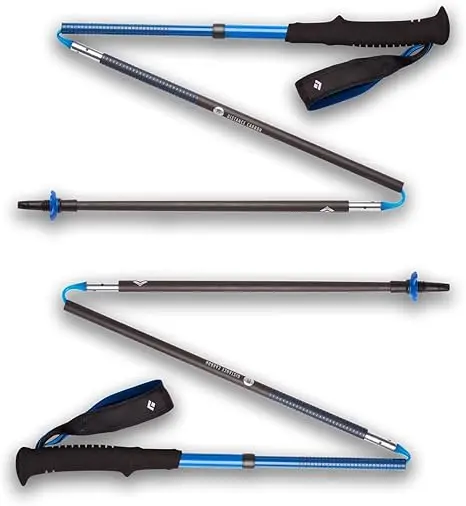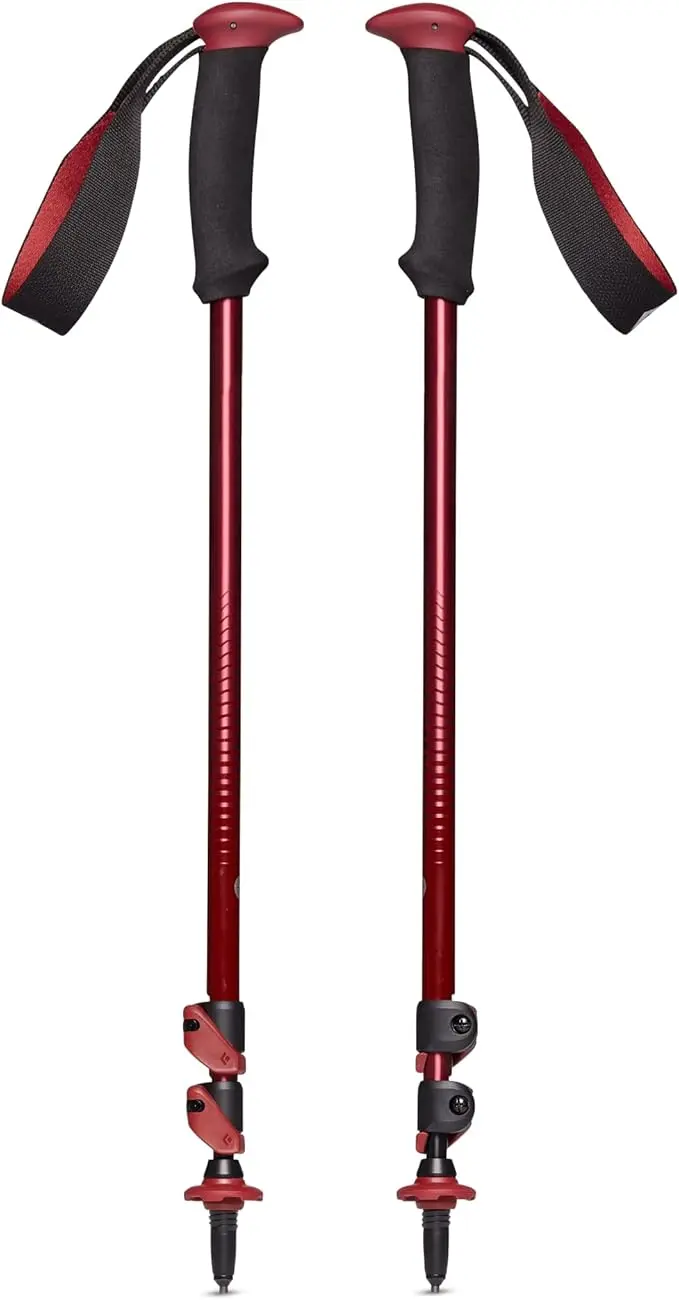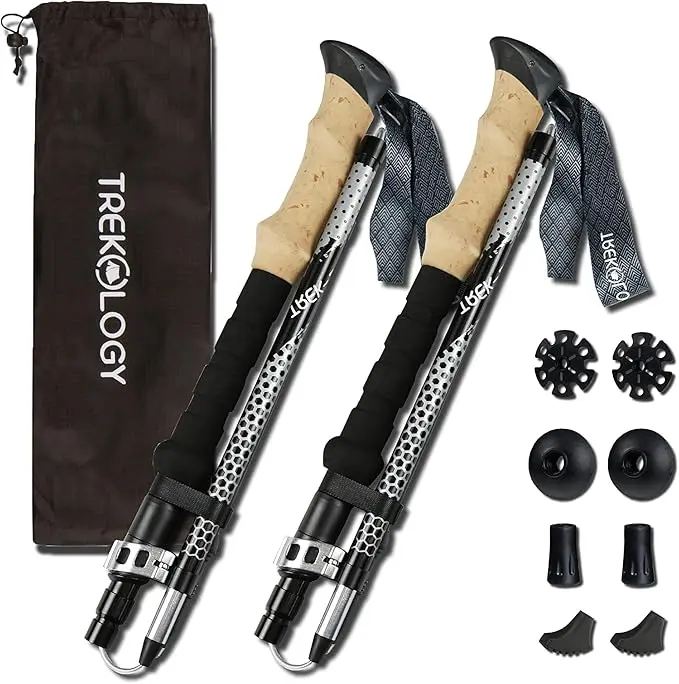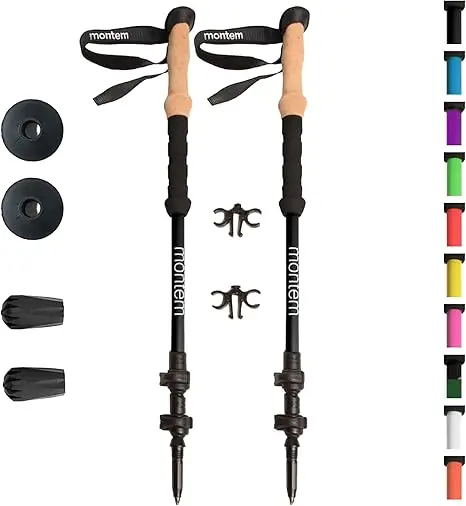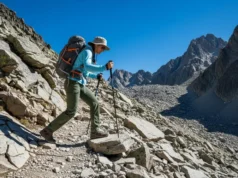In this article
You’re on a steep, gravelly descent on a trail like the Teton Crest, your pack heavy and your knees aching. You plant your trekking pole for support, but in that critical moment, it snaps. Suddenly, a piece of essential backpacking gear meant for safety becomes a liability. This single moment defines the core conflict every hiker faces when choosing the best trekking poles for backpacking: the high-stakes trade-off between ultralight backpacking performance and unwavering durability. This guide is not just another comparative listicle of top rated hiking poles; it’s a strategic dossier with in-depth testing notes designed to help you select the right outdoor gear for your safety, your hiking style, and your peace of mind.
This guide will transform you from a feature-shopper into a strategic backpacker. We will explore the fundamental dilemma between ultralight carbon fiber and durable aluminum poles, helping you understand which shaft material suits your personal risk tolerance. You’ll discover your hiking persona—whether you’re an Ultralight Thru-Hiker focused on weight savings, an All-Condition Expeditionist needing 4-season versatility, or a Pragmatic Weekender looking for the best budget trekking poles—and see which features you should prioritize. We’ll establish a system of trust, focusing on the non-negotiable foundations of shaft integrity and locking mechanism security. Finally, you’ll get direct, data-backed recommendations for every type of hiker, balancing performance, durability, and value.
How to Choose the Right Trekking Poles: An Expert’s Framework
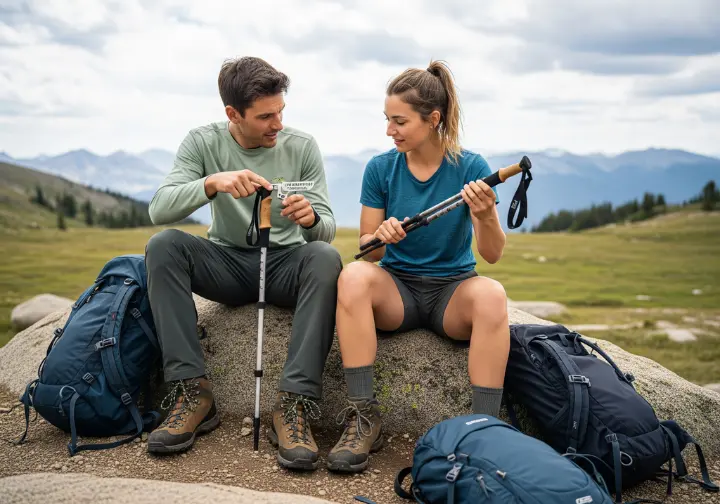
Our buying advice for choosing the right trekking poles is less about marketing claims and more about physics and philosophy. To make a smart, confident choice, you need objective knowledge about how these tools perform in the real world. This framework will arm you with that knowledge, moving you beyond the spec sheet to understand the tangible impact of each feature on your safety and performance on the trail.
Why Do Shaft Material and Durability Matter Most?
The soul of a trekking pole is its shaft. Everything else is secondary. The carbon vs aluminum debate isn’t just about weight; it’s about how a pole behaves at its breaking point, which is what we call its “failure mode.” An aluminum pole, when over-stressed, is designed to bend. While a bent pole is compromised, it often remains usable enough to help you limp back to the trailhead. Carbon fiber, on the other hand, can snap catastrophically, leaving you without support in an instant. This distinction is critical when considering the weight vs. durability trade-off.
Your choice of material should directly connect to your tolerance for risk. If your backpacking adventures involve off-trail bushwhacking through dense woods or carrying a heavy pack where a pole failure would be disastrous, the resilience of aluminum or a reinforced kevlar-carbon shaft is paramount. For on-trail hiking, where every gram counts over thousands of trail miles, the risk of a carbon snap becomes more acceptable in exchange for significant weight savings. This introduces the hierarchy of trust: Shaft Integrity is the absolute foundation. If the pole’s shaft breaks, nothing else—not the grip, not the lock, not the weight—matters. The demands of a heavy pack can test this integrity, which is why understanding how you pack your backpack is foundational to choosing gear that can handle the load.
Once you trust the pole’s shaft, you need to trust that it won’t collapse on you.
How Do Locking Mechanisms and Adjustability Impact Reliability?
A trekking pole collapses under load is just as dangerous as one that snaps. The security of the locking mechanism is the second pillar in our hierarchy of trust. Modern external lever locks, like Black Diamond’s “FlickLock” or MSR’s “DynaLock,” are vastly superior to older internal twist-lock mechanisms. Their security is visually verifiable—you can see that the clamp is closed and secure. They are simple to operate, even with thick gloves in freezing conditions, and hold tight under the heavy load of a downhill push.
Pro-Tip: Before every major hike, check the tension on your lever locks. Most have a small dial or screw that can be hand-tightened. The lever should close with firm pressure, but not so much that you can’t open it with your thumb. This simple check prevents unexpected slippage on the trail.
In contrast, older twist-locks are prone to slipping, can be difficult to tighten properly, and offer no visual confirmation of their security. This unreliability makes them a poor choice for serious hiking. The pole’s design also affects its use. Traditional telescoping poles are simple and durable, with a wide adjustability range that is critical for tent pitching compatibility with trekking-pole shelter models like the Zpacks Duplex or Durston X-Mid, which often require a pole length of 125 cm or more. Conversely, folding “Z-poles” trade some adjustability for a much more compact collapsed length, making them ideal for travel, climbing, or fastpacking. As research from a study on downhill hiking with external loads confirms, reliable pole performance under pressure is key to reducing strain. Of course, this reliability is only useful if you are properly adjusting your pole length for the terrain, a fundamental skill for both uphill efficiency and downhill safety.
With safety and reliability covered, you can now optimize for long-distance efficiency and comfort.
What Makes a Trekking Pole Comfortable Over a 100-Mile Journey?
Over a long trail, comfort is not a luxury; it’s a performance metric. Discomfort from poor grip ergonomics leads to fatigue, blisters, and poor technique. Trekking pole comfort is a system comprising the grip material, the strap, and the pole’s swing weight. There are three primary grip materials, each with distinct characteristics. Cork is the premium choice for a good hiking pole; it wicks sweat, provides shock absorption, and slowly molds to the unique shape of your hand over time. EVA foam is lighter and soft to the touch, but a foam grip can absorb water and feel clammy in wet conditions. Rubber is durable and insulating, making it suitable for cold-weather pursuits, but it doesn’t breathe and is a common cause of blisters on warm days.
Proper technique means transferring your weight through the strap, not by death-gripping the handle. This is why good strap comfort from a wide, padded, and easily adjustable strap is crucial for preventing chafing and ensuring an efficient transfer of power.
Pro-Tip: When adjusting your straps, your hand should go up through the bottom of the loop and then grip the handle. The strap should be snug enough that you can almost let go of the grip and still feel supported by your wrist. This technique dramatically reduces hand and forearm fatigue.
Finally, consider swing weight. Every ounce at the end of the pole is magnified over thousands of repetitions, contributing to cumulative arm fatigue. This is the primary benefit of ultralight carbon trekking poles—a lighter swing weight means your arms feel fresher at the end of a long day, allowing you to hike farther and faster with less effort.
| Attribute | Cork | EVA Foam |
|---|---|---|
| Moisture Management | Wicks away sweat, keeping hands dry and preventing blisters. | Can absorb water and feel clammy in wet conditions. |
| Long-Term Comfort | Molds to your hand’s unique shape for a custom, ergonomic feel over time. | Soft and comfortable initially but does not conform to the hand. |
| Weight | Slightly heavier than foam. | Lighter than cork, which reduces overall pole weight. |
| Cost | Typically found on premium poles, contributing to a higher price point. | More affordable and widely available on a variety of poles. |
Now that you have the complete framework, let’s show you how we applied it to find the best trekking poles.
Our Selection Process: How We Built This Guide
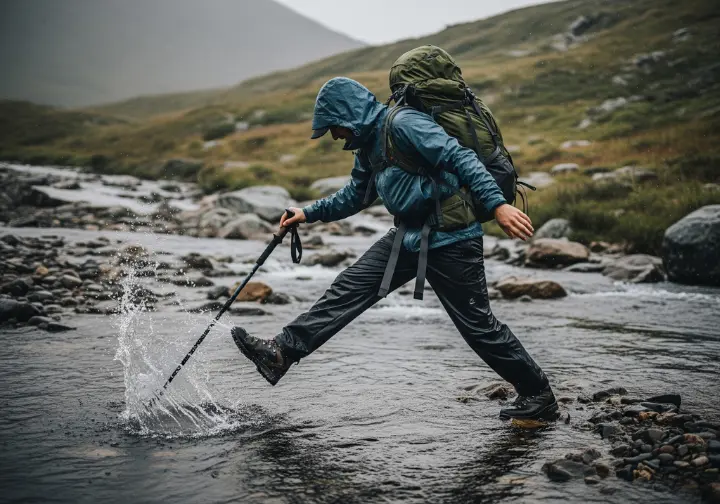
To build this guide, we committed to a process that places your trust above all else. Our ranked picks are the result of rigorous, transparent, and objective analysis designed to serve one person: you, the hiker.
Our commitment to objectivity is unwavering. We are hikers first and foremost. Our singular goal is to provide you with the most reliable, data-backed advice possible. This guide is built not on marketing hype, but on a foundation of synthesized expert analysis, personal field testing across terrains like the Durango Colorado trail system, and real-world user feedback from thousands of trail miles.
We developed a consistent, five-point evaluation framework to judge every good trekking pole: Durability, Comfort, Packability, Locking Security, and overall Price-to-Performance Value. This wasn’t just about looking at specs; we considered factors like the availability of replaceable sections and warranty support. We weighted these attributes based on real-world impact, ensuring our durability rating and comfort rating are fair, directly comparable, and focused on what truly matters when you’re miles from the trailhead.
We started by identifying three core hiker personas: the All-Condition Expeditionist, the Ultralight Thru-Hiker, and the Pragmatic Weekender. Each persona has a unique set of needs and intended uses. We then analyzed dozens of market-leading poles from brands like Black Diamond, Leki, MSR, Gossamer Gear, and Trekology, filtering them through our evaluation framework to find the top performers specifically suited to the demands of each hiking style.
A note on affiliate links: If you choose to purchase a product through one of our links, we may earn a small commission at no extra cost to you. This helps support our work, but our recommendations are, and always will be, based on performance and user value, not profit.
The Best Trekking Poles for Backpacking of 2025: Our Top Recommendations for Every Need
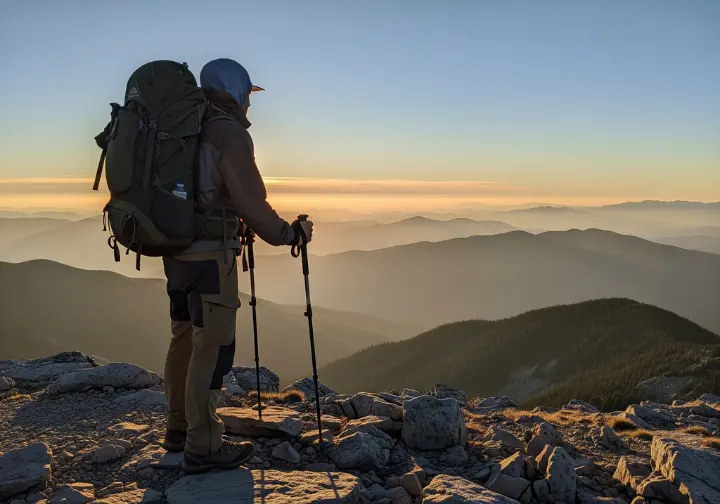
Here are our curated top recommendations, organized by the key user personas we identified. This structure empowers you to move beyond a simple “best of” list and select the perfect tool that aligns with your specific needs, priorities, and hiking philosophy.
Our Top Picks for The All-Condition Expeditionist
This user demands absolute, bomb-proof reliability for rugged, off-trail, and 4-season use, including winter use that requires the included snow baskets. This backpacker accepts a weight penalty as a fair trade for unwavering durability and 4-season versatility for activities from mountaineering to splitboarding. These are the workhorses—strong poles built to withstand the harshest conditions without fail.
Our Top Picks for The Ultralight Thru-Hiker
This user’s primary goal is minimizing base weight to maximize daily mileage on a long-distance backpacking trip like the Appalachian Trail. They belong to the ultralight category, often use poles as trekking-pole shelter supports—making tent-pitching compatibility critical—and they accept the durability risk of carbon fiber poles for a significant performance gain. For these ultralight backpackers, every gram is scrutinized, and efficiency is king.
Our Top Picks for The Pragmatic Weekender
Representing the core of the market, this user seeks the best possible balance of comfort, durability, and price for on-trail day hikes and weekend treks. They are value-driven, and this casual hiker prioritizes a pleasant, reliable hiking experience over chasing the lowest possible weight or preparing for extreme, 4-season use. They want good walking poles that just work.
Conclusion
The journey to the top rated trekking pole ends not with a single “best” product, but with a clear understanding of your personal hiking philosophy. The most important decision you’ll make is choosing between the resilience of aluminum and the low weight of carbon fiber, recognizing that each material has a fundamentally different failure mode. From there, always prioritize a secure external lever lock over an outdated twist lock; a pole that collapses is a serious safety hazard. Match your final choice to your primary use case—expeditionists need durability, thru-hikers need low weight, and weekenders need balanced value and comfort. Finally, remember that comfort is a system where premium cork grips and wide, padded straps can dramatically reduce fatigue and prevent blisters over a long hike.
Now that you’re armed with an expert framework, review the recommendations for your hiker persona and invest in the pair of trekking poles that will keep you safe and strong on the trail for years to come.
Frequently Asked Questions about Trekking Poles for Backpacking
Are carbon fiber trekking poles worth the extra cost?
They are absolutely worth it if reducing arm fatigue and minimizing swing weight is your highest priority, which is often the case for long-distance thru-hiking. The weight savings from these lighter poles over thousands of miles can lead to less cumulative fatigue and greater efficiency. However, for most hikers, a high-quality aluminum pole like the Black Diamond Pursuit offers better real-world durability and a more approachable value for only a slight weight penalty, making it a more practical choice for varied conditions.
What is the best grip material: cork or foam?
Cork is generally considered the superior material for three-season hiking. It excels at wicking sweat away from your hands, it dampens trail vibration effectively, and over time it will slowly conform to the specific shape of your grip, providing a custom fit. It is ideal for hot weather and long-distance comfort. EVA Foam is lighter and softer to the touch, but it can absorb moisture and feel clammy or slippery in sweaty or rainy conditions. We recommend cork trekking poles, like the Black Diamond Alpine Carbon Cork, for the best all-around performance.
Should I get folding (Z-style) or telescoping poles?
You should get folding poles if you need to frequently stow them inside a pack for activities like travel, climbing, or scrambling, as these collapsible poles shrink to a much shorter length. They are the clear winner for packability. For general on-trail backpacking, traditional telescoping poles, such as the Leki Makalu Cork Lite, often provide greater durability with fewer moving parts and a wider adjustability range. This adjustability is also a critical factor for thru-hikers using their poles to pitch an ultralight backpacking tent, making telescoping poles a more versatile choice for that specific ideal use-case.
How much should I spend on a good pair of trekking poles?
You can get a highly durable pole made of aluminum for around $100, which is an excellent starting point for most average hikers. Models in this budget range provide fantastic durability and all the core features you need. If you are looking for premium features like lower weight, carbon fiber construction, and superior cork grips, expect to spend between $150 and $200 for top-tier models like the REI Flash Carbon or the Black Diamond Alpine Carbon Cork.
How do I maintain my trekking poles and what about field repair?
Proper maintenance is key to longevity. After each hike, especially in wet or muddy conditions, separate the sections of your poles and let them dry completely to prevent corrosion. Periodically clean the locking mechanisms with a dry brush to remove grit. For field repair, it’s wise to carry a small kit. A roll of duct tape or Tenacious Tape can act as a carbon tube splint in an emergency. Some manufacturers also sell spare ferrules (the locking pins for Z-poles) and tips, which are good to have on a long backpacking trip.
Risk Disclaimer: Hiking, trekking, backpacking, and all related outdoor activities involve inherent risks which may result in serious injury, illness, or death. The information provided on The Hiking Tribe is for educational and informational purposes only. While we strive for accuracy, information on trails, gear, techniques, and safety is not a substitute for your own best judgment and thorough preparation. Trail conditions, weather, and other environmental factors change rapidly and may differ from what is described on this site. Always check with official sources like park services for the most current alerts and conditions. Never undertake a hike beyond your abilities and always be prepared for the unexpected. By using this website, you agree that you are solely responsible for your own safety. Any reliance you place on our content is strictly at your own risk, and you assume all liability for your actions and decisions in the outdoors. The Hiking Tribe and its authors will not be held liable for any injury, damage, or loss sustained in connection with the use of the information herein.
Affiliate Disclosure: We are a participant in the Amazon Services LLC Associates Program, an affiliate advertising program designed to provide a means for us to earn advertising fees by advertising and linking to Amazon.com. As an Amazon Associate, we earn from qualifying purchases. We also participate in other affiliate programs and may receive a commission on products purchased through our links, at no extra cost to you. Additional terms are found in the terms of service.



